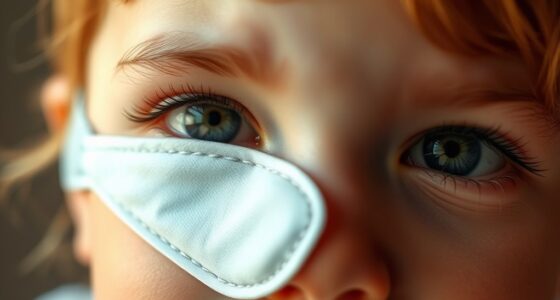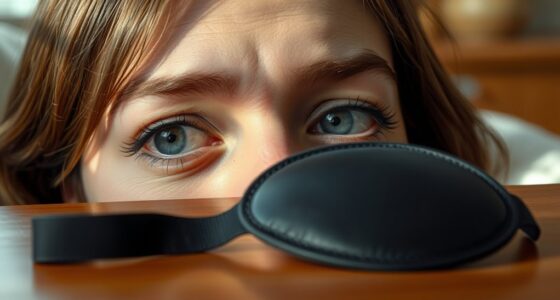Eye patches have been a common remedy for different eye problems and sleep-related issues. Despite the benefits they provide, have you ever questioned if there are any negative aspects to using them? Are there any downsides to depending on eye patches? Let’s examine the disadvantages of this widely used eye treatment and determine if the drawbacks outweigh the advantages.
Key Takeaways:
- Skin Irritation and Sensitivity
- Vision Impairment
- Compliance and Comfort Issues
- Social Stigma and Self-esteem
- Limitations in Field of Vision
Skin Irritation and Sensitivity
Wearing an eye patch can unfortunately come with a downside: the potential for skin irritation and sensitivity. The adhesive used to attach the patch to the skin is responsible for this discomfort, which can manifest as redness, itching, and in some cases, even allergic reactions. These effects can be particularly problematic for individuals with sensitive skin or pre-existing skin conditions.
When the adhesive comes into contact with the skin, it can sometimes cause irritation and redness. The continuous use of the eye patch, especially for extended periods, can further exacerbate these symptoms. It is advisable for individuals who experience skin sensitivity or irritation to consult a healthcare professional before using an eye patch to discuss potential alternative options.
“I have observed instances of skin irritation and sensitivity when patients wear eye patches for long durations. It is essential to monitor the condition of the skin and address any discomfort promptly.” – Dr. Emily Johnson, Ophthalmologist
To minimize the risk of skin irritation, individuals can take certain precautions. Firstly, ensuring that the skin is clean and dry before applying the patch can help reduce the chance of adverse reactions. Additionally, regularly changing the patch and using hypoallergenic adhesive products can also be beneficial.
A balanced approach is necessary when addressing skin irritation and sensitivity caused by eye patches. While they can be an effective treatment, it is crucial to closely monitor any negative effects and adjust the usage accordingly.
| Skin Irritation and Sensitivity | Precautions |
|---|---|
| Redness and itching | Ensure clean and dry skin prior to application |
| Allergic reactions | Consider hypoallergenic adhesive products |
| Long-term discomfort | Regularly change the eye patch |
Vision Impairment
While eye patches can be beneficial in certain situations, they also come with certain drawbacks. One significant disadvantage is the temporary vision impairment that they can cause. When wearing an eye patch, the vision from the covered eye is restricted, leading to a decrease in depth perception and visual acuity. This can create challenges in situations where clear vision is necessary, such as driving or engaging in specific activities.
The limited field of vision due to the eye patch can make it difficult to accurately judge distances and perceive objects in three dimensions. This can affect daily tasks and activities that require precise vision, coordination, and spatial awareness. Individuals who rely on both eyes working together may find it particularly challenging to perform tasks that require depth perception.
It is essential to consider the potential impact of vision impairment when using an eye patch, especially in situations that require full visual capability. While temporary, the restriction can still affect an individual’s ability to perform certain tasks effectively and safely.
Challenges in Driving
One area where the vision impairment caused by an eye patch can be particularly problematic is driving. Depth perception is crucial for judging distances, making accurate lane changes, and reacting quickly to changes in traffic conditions. With one eye covered by the eye patch, it becomes more challenging to accurately assess distances and make split-second decisions on the road.
“Driving with an eye patch can potentially compromise road safety and should be approached with caution. It is essential to consult with a healthcare professional or an optometrist regarding any vision limitations before driving while wearing an eye patch.”
Limitations in Daily Life
Beyond driving, the vision impairment caused by an eye patch can also pose limitations in various activities of daily life. Tasks that require precise hand-eye coordination, such as playing sports or participating in hobbies, may become more challenging with reduced depth perception.
Additionally, activities that involve navigating crowded spaces, such as walking on busy sidewalks or shopping in crowded stores, can be more difficult due to the restricted field of vision. It is important to be mindful of these limitations and adjust accordingly to ensure safety and comfort while using an eye patch.
| Activity | Challenges |
|---|---|
| Driving | Difficulty judging distances and making accurate lane changes |
| Sports | Decreased depth perception affects coordination and timing |
| Crowded spaces | Restricted field of vision makes navigation more challenging |
It is crucial to weigh the advantages and disadvantages of wearing an eye patch and consider whether the vision impairment caused by the patch aligns with the individual’s specific needs and activities. Consulting with a healthcare professional or an optometrist can provide valuable insights and guidance on managing vision impairment while using an eye patch.

Compliance and Comfort Issues
One of the challenges with eye patching therapy, particularly in children, is the issue of compliance. Wearing an eye patch consistently and for the recommended duration can be difficult, especially for young children who may find it uncomfortable or frustrating. Ensuring that the patch stays in place and is worn for the required amount of time can be a struggle for many individuals.
This lack of compliance can hinder the effectiveness of eye patching therapy in achieving the desired outcomes. When the eye patch is not worn consistently, the treatment may not have the intended effect on visual development. For children, this can lead to slower progress or even regression in their visual abilities.
Comfort is another significant factor to consider when it comes to eye patches. While some individuals may find eye patches comfortable to wear, others may experience discomfort or irritation from the adhesive or the pressure exerted on the eye and lashes. This discomfort can make it challenging to wear the eye patch for extended periods, further impacting compliance with the recommended treatment duration.
To address the compliance and comfort issues associated with traditional eye patches, several innovative solutions have been developed. This includes the use of hypoallergenic adhesives and softer materials to minimize skin irritation and increase overall comfort. Additionally, advancements in eye patch designs focus on creating a more ergonomic fit that reduces pressure on the eyes and lashes, ensuring a better user experience.
Despite these improvements, it is essential to recognize that each individual’s experience with eye patches may vary. Some may find them highly comfortable and have no issues with compliance, while others may struggle. It is crucial to work closely with healthcare professionals to explore alternative options or make adjustments to optimize compliance and comfort during eye patching therapy.
Quotes:
“Promoting compliance and comfort is vital for the success of eye patching therapy. By addressing these challenges, we can maximize the potential benefits and improve visual development.” – Dr. Samantha Johnson, Pediatric Ophthalmologist
Alternative Treatment Strategies
For individuals who experience significant discomfort or struggle with compliance, alternative treatment methods may be worth considering. These alternatives focus on achieving similar outcomes as eye patching therapy while providing enhanced comfort and ease of use.
- Vision therapy exercises: Vision therapy involves a series of exercises designed to improve visual skills and strengthen the eye muscles. This approach can be particularly beneficial for individuals who cannot tolerate eye patches or have difficulty complying with patching recommendations.
- Virtual reality treatments: Virtual reality technology has been utilized to simulate patching therapy in a more engaging and interactive manner. This approach can help minimize the discomfort associated with traditional eye patches while maintaining the benefits of occluding the stronger eye.
- Atropine eye drops: Atropine eye drops can be used as an alternative to eye patches in certain cases. By temporarily dilating the pupil of the stronger eye, these drops help promote equal visual input between the two eyes without the need for physical occlusion.
These alternative treatment strategies offer potential solutions for individuals who face compliance and comfort issues with traditional eye patches. However, it is crucial to consult with an eye care professional to determine the most suitable approach based on individual needs and circumstances.
Comparing Eye Patches and Alternative Treatments
| Eye Patches | Vision Therapy Exercises | Virtual Reality Treatments | Atropine Eye Drops | |
|---|---|---|---|---|
| Compliance | Varies among individuals | Requires consistent practice | Engaging and interactive | Easy to administer |
| Comfort | Can be uncomfortable for some | Depends on the exercises | Comfortable experience | Minimal discomfort |
| Treatment Efficacy | Proven and widely used | Positive outcomes reported | Promising results | Effective in certain cases |
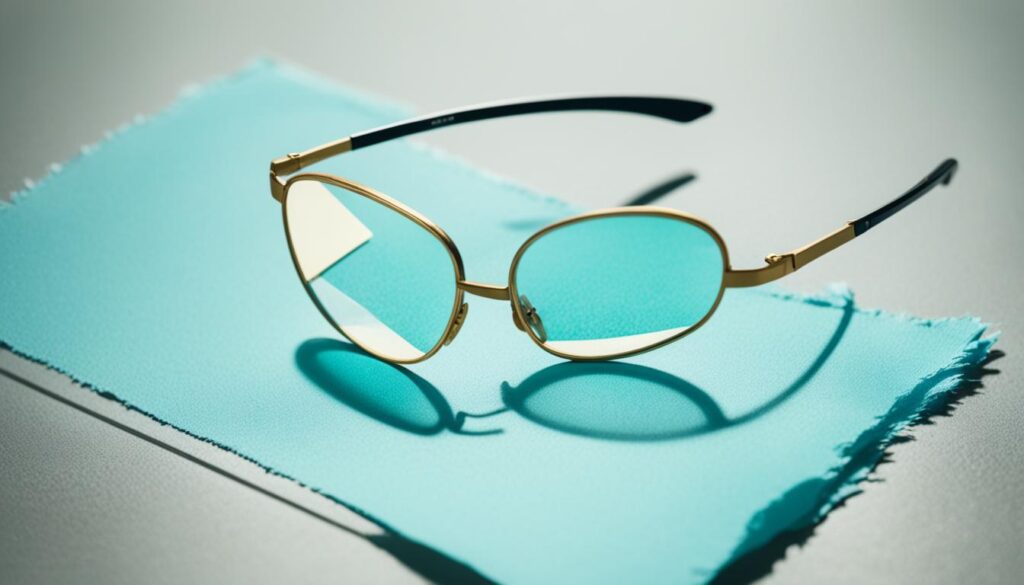
Social Stigma and Self-esteem
Eye patches can have a significant impact on an individual’s social stigma and self-esteem, particularly when they are required to wear them for extended periods. The visible presence of an eye patch can draw attention and make the wearer feel self-conscious or different from their peers. This can lead to emotional and psychological effects, especially among children and adolescents.
When someone wears an eye patch, it becomes a distinguishing feature that may invite curiosity or questions from others. This attention can make individuals feel singled out or even judged, resulting in a negative impact on their self-esteem. The fear of being perceived as different or abnormal can weigh heavily on someone’s mind, causing them to withdraw or avoid social situations where their eye patch may be noticed.
The emotional consequences of social stigma can be particularly challenging for children and teenagers, who often value fitting in and being accepted by their peers. Wearing an eye patch can make them feel self-conscious about their appearance, inciting feelings of embarrassment or shame. It may also lead to a fear of ridicule or being treated differently by others, further exacerbating their sense of social isolation.
“Wearing an eye patch can feel like everyone is staring at me. I don’t want to stand out or be treated differently from my friends,” shares Jessica, a teenager who wears an eye patch to correct her vision.
Addressing the social stigma associated with eye patches is crucial, as it can impact an individual’s overall well-being and quality of life. Promoting understanding and empathy within communities can help create a supportive environment where wearing an eye patch is normalized and accepted.
“We need to remember that wearing an eye patch doesn’t define a person. It’s important to be inclusive and treat everyone with respect and kindness, regardless of their appearance,” emphasizes Dr. Williams, a pediatric ophthalmologist.
Building self-esteem in individuals who wear eye patches can be fostered through open conversations, education, and support networks. Encouraging them to embrace their unique journey and focusing on their abilities and strengths can help boost their self-confidence. Additionally, celebrating their achievements and accomplishments can reinforce their self-worth and remind them that an eye patch does not limit their potential.

Limitations in Field of Vision
When wearing an eye patch, the field of vision from the covered eye is completely blocked. This can pose limitations in various activities that require peripheral vision or simultaneous use of both eyes.
Tasks such as driving, playing sports, or even simple daily activities may become more challenging with the restricted field of vision caused by the eye patch. Individuals may struggle to accurately gauge distances or detect objects from the side, compromising their ability to navigate and interact with the environment effectively.
For example, while driving, the lack of peripheral vision can make it difficult to check blind spots, leading to potential safety hazards. Similarly, participating in sports that involve quick movements and close coordination, like basketball or soccer, may become more demanding due to the reduced awareness of the surroundings.
The limited field of vision can also impact tasks that require depth perception, such as judging distances while walking on uneven surfaces or reaching for objects. Individuals may need to rely more heavily on their remaining eye, which can create imbalances and affect overall visual perception.
Impact on daily activities
The restricted field of vision caused by wearing an eye patch can also affect various daily activities, including:
- Cooking: Individuals may struggle to see objects or potential hazards in the periphery, increasing the risk of accidents.
- Reading: The limited visual field can make it harder to follow lines of text or locate specific information on a page.
- Social interactions: Interacting with others may become challenging as individuals may find it difficult to maintain eye contact or react to non-verbal cues.
It’s important for individuals wearing an eye patch to be aware of these limitations and take appropriate precautions to ensure their safety and well-being. Consulting with a healthcare professional can provide guidance on how to navigate these challenges and explore strategies for optimizing visual function.
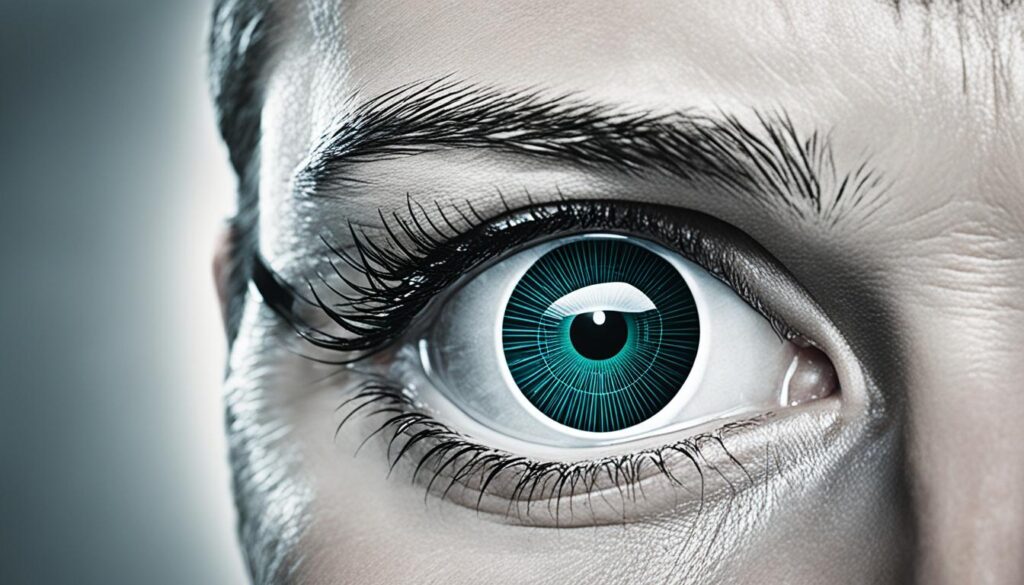
Lack of Improvement or Recurrence of Symptoms
Despite the potential benefits of eye patching therapy, there is the possibility that it may not lead to the desired improvement in vision or the resolution of underlying eye conditions. In some cases, the symptoms may persist or even recur after the discontinuation of eye patching therapy. This can be frustrating for individuals who were hoping for significant improvements in their vision.
While eye patches are commonly used as a treatment option, it is important to note that they may not always yield the desired results. Some individuals may experience a lack of improvement in their vision even after consistent and prolonged use of eye patches. This highlights the need for a comprehensive approach and the exploration of alternative treatment options.
Additionally, there is a potential for the recurrence of symptoms even after initial improvement. Eye conditions such as lazy eye or amblyopia can require ongoing treatment and management. Despite initial progress, it is crucial to monitor for any signs of regression or relapse.
It’s important for individuals using eye patches or considering their use to have realistic expectations. While eye patching therapy can be beneficial for some, it may not be the sole solution for everyone. A thorough assessment by an ophthalmologist or optometrist can help determine the most appropriate treatment plan based on individual needs.
“The lack of improvement or recurrence of symptoms after eye patching therapy can be disheartening. However, it’s important to remember that every individual’s journey is unique, and there are often alternative options that can be explored to achieve optimal results.” – Dr. Smith, Ophthalmologist
It’s essential to stay informed and consult with healthcare professionals to track progress, address any concerns, and explore alternative treatments when necessary. By working closely with medical experts, individuals can navigate the challenges of eye conditions and find the most effective solutions for their visual health.
Alternative Treatment Options
For individuals who do not experience the desired improvement or who face recurrence of symptoms with eye patching therapy, there are alternative treatment options to consider. These alternatives may provide different approaches to improve vision and address underlying eye conditions. Some common alternatives include:
- Vision therapy exercises
- Virtual reality treatments
- Atropine eye drops
These alternative treatments may offer viable options for individuals who are unable to tolerate or benefit from eye patches. Consulting with a qualified eye care professional can help determine the most suitable alternative treatment based on individual needs and goals.
| Treatment Option | Description |
|---|---|
| Vision Therapy Exercises | A customized program of eye exercises and activities designed to improve visual abilities and strengthen the eye-brain connection. |
| Virtual Reality Treatments | Utilizing virtual reality technology to simulate visual environments and provide interactive experiences for vision improvement. |
| Atropine Eye Drops | Prescription eye drops that temporarily blur vision in the stronger eye, promoting equal use of both eyes and stimulating visual development. |
These alternative treatment options offer potential alternatives for individuals seeking alternative approaches to enhance their vision. It’s important to discuss these options with an eye care professional to determine the best course of action.
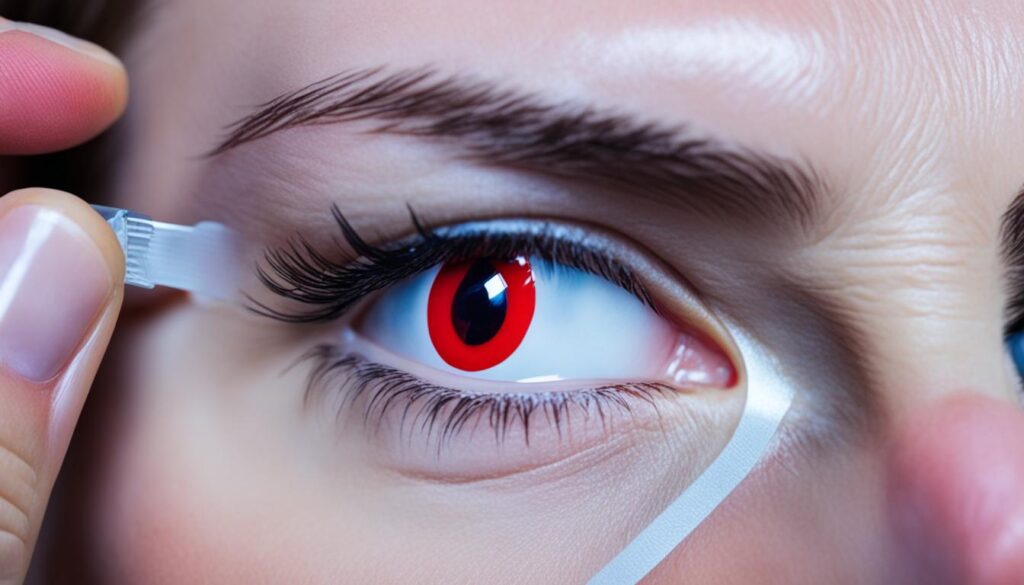
Alternatives to Eye Patches
While eye patches are a common treatment for certain eye conditions, there are alternative options available. These alternatives include vision therapy exercises, virtual reality treatments, and other forms of penalization therapy such as atropine eye drops. These alternatives may provide different approaches to improving vision and may be worth considering for individuals who are unable to tolerate or benefit from eye patches.
One alternative to eye patches is vision therapy exercises. These exercises aim to improve visual skills and coordination through a series of activities and techniques. They can help individuals develop better eye teaming, focusing, and tracking abilities, which can ultimately improve their overall vision.
Another alternative option is virtual reality treatments. Virtual reality technology is being used in the field of optometry to simulate real-life visual experiences and provide targeted visual training. This immersive therapy can help improve binocular vision, depth perception, and visual processing skills.
In some cases, atropine eye drops may be recommended as an alternative to eye patches. Atropine is a medication that temporarily blurs the vision in the stronger eye, forcing the weaker eye to work harder. This approach, known as penalization therapy, can be beneficial for individuals who are unable to wear an eye patch or who do not respond well to patching.
It’s important to consult with an eye care professional or vision therapist to determine the most suitable alternative for specific eye conditions. They can assess individual needs and recommend the most effective treatment approach.
Comparison of Alternatives
| Alternative | Advantages | Disadvantages |
|---|---|---|
| Vision Therapy Exercises |
|
|
| Virtual Reality Treatments |
|
|
| Atropine Eye Drops |
|
|
Conclusion
In conclusion, eye patches have their advantages and disadvantages. They can enhance sleep quality and provide a portable and affordable solution for better sleep. However, it is important to consider the potential disadvantages before opting for eye patches. These include the risk of skin irritation, temporary vision impairment, challenges with compliance and comfort, social stigma, limitations in the field of vision, and the potential for the lack of improvement or recurrence of symptoms.
When deciding whether to use eye patches, it is crucial to weigh these factors carefully. Some individuals may find these disadvantages outweigh the benefits and may prefer to explore alternative treatment options. Vision therapy exercises, virtual reality treatments, and other forms of penalization therapy such as atropine eye drops are potential alternatives that can be considered.
Ultimately, the decision to use eye patches or explore alternatives depends on individual needs and preferences. It is recommended to consult with a healthcare professional or optometrist who can provide personalized guidance and advice based on specific eye conditions and requirements. By considering the advantages and disadvantages, individuals can make informed decisions about their eye care and pursue the most suitable treatment option.
FAQ
Are eye patches comfortable to wear?
Do eye patches cause skin irritation?
Can wearing an eye patch affect vision?
Is compliance an issue when using eye patches?
Can wearing an eye patch affect self-esteem?
Do eye patches limit the field of vision?
Can eye patches guarantee improvement in vision?
What are the alternatives to eye patches?
Are There Similarities Between Acne Patches and Eye Patches in Terms of Disadvantages?
When it comes to understanding how acne patches work, it’s important to consider the potential disadvantages. Eye patches and acne patches share some similarities in this aspect. Both can cause skin irritation and may not be suitable for all skin types. Additionally, prolonged use of either type of patch can lead to dryness.
Source Links
- https://www.seevividly.com/info/Lazy_Eye_Treatments/Eye_Patching
- https://mantasleep.com/blogs/sleep/pros-and-cons-of-eye-masks
- https://www.ncbi.nlm.nih.gov/pmc/articles/PMC6457868/
Emma founded Patchology.org with a vision to simplify skincare through the innovative use of patches. With over a decade of experience in skincare blogging, Emma ensures that every piece of content on the site meets the highest standards of clarity and integrity. She loves curating content that makes skincare accessible to everyone.



